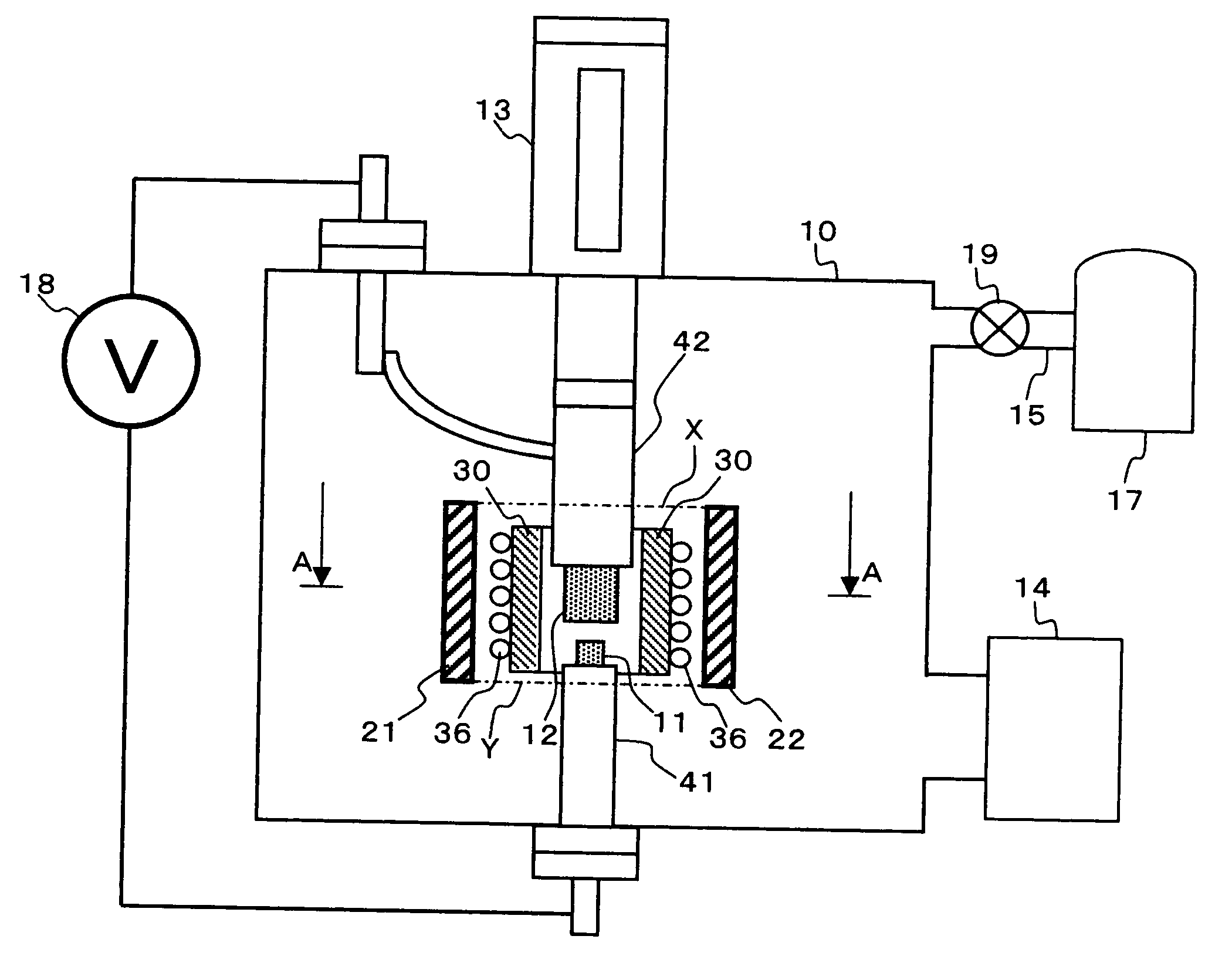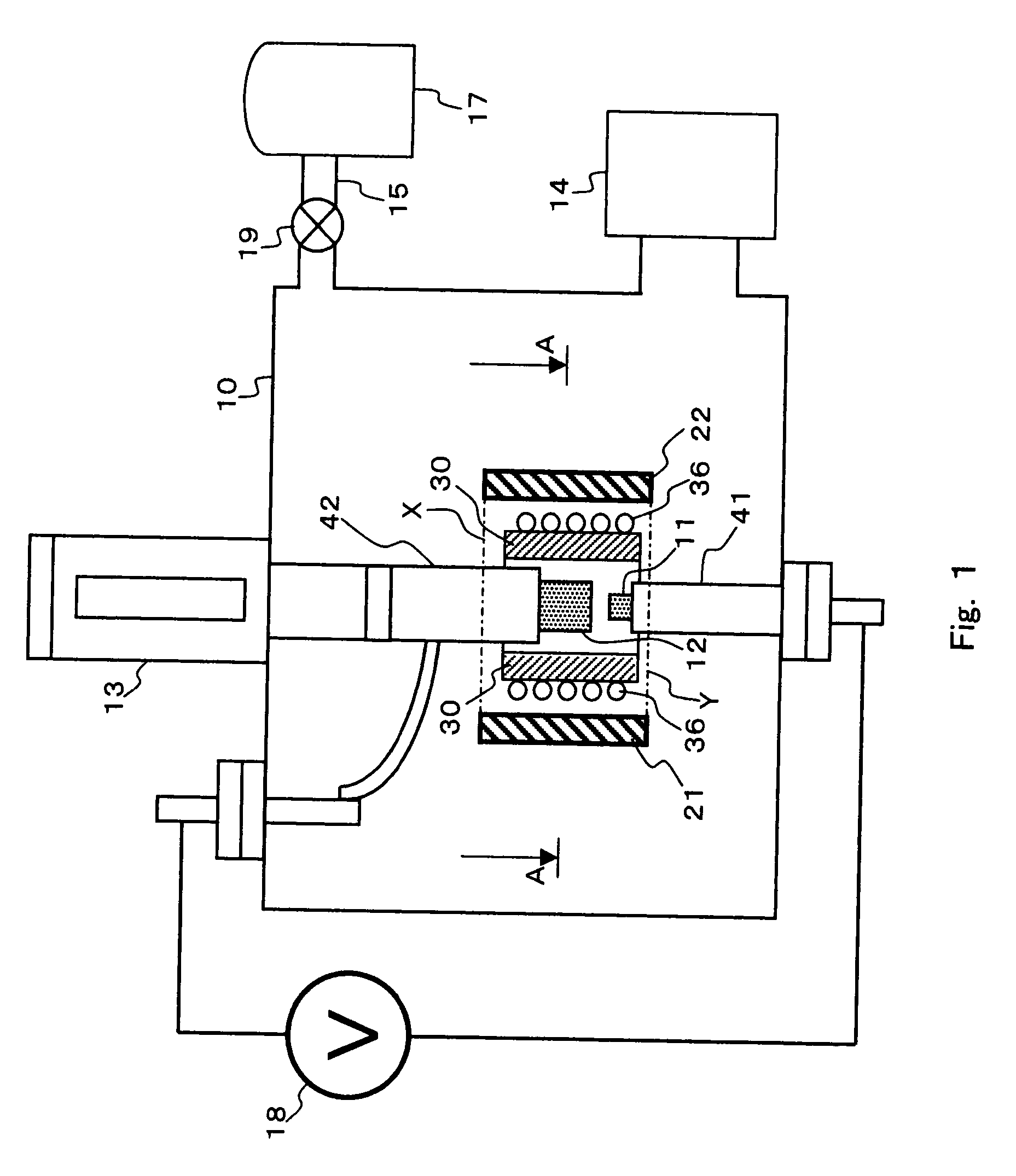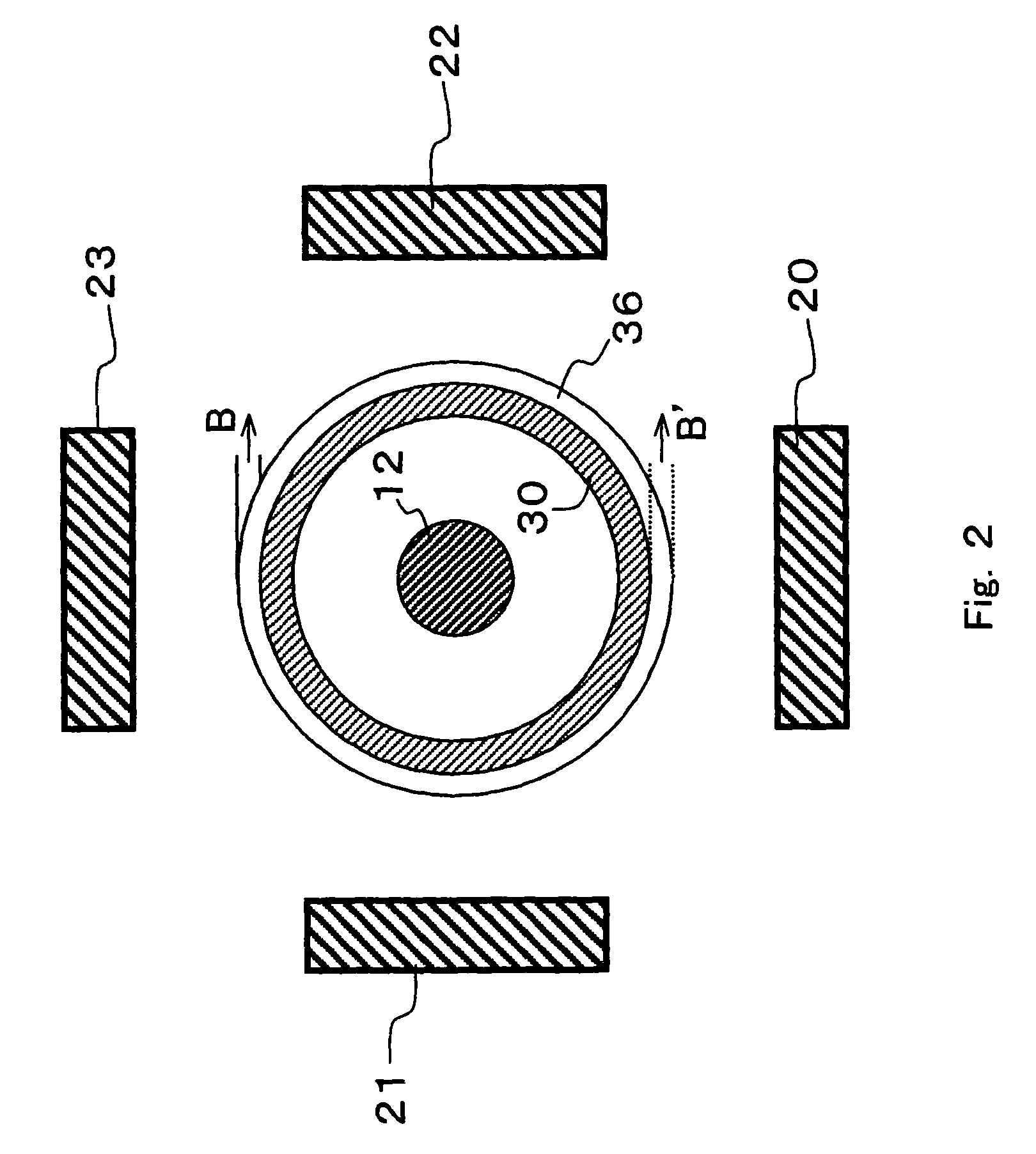Manufacturing apparatus for carbon nanotube
a technology of carbon nanotubes and manufacturing apparatuses, which is applied in the manufacture of electric discharge tubes/lamps, energy-based chemical/physical/physico-chemical processes, plasma techniques, etc., and can solve problems such as difficult to obtain a few grams of sample, no particular boundary, and the controversy of carbon nanotube generating methods
- Summary
- Abstract
- Description
- Claims
- Application Information
AI Technical Summary
Benefits of technology
Problems solved by technology
Method used
Image
Examples
example 1
[0134] The manufacturing apparatus shown in FIGS. 5 to 7 is used to manufacture a carbon nanotube. Hereinafter, description is made of specific requirements for the individual constitution of the manufacturing apparatus.
[0135] Reaction container 50: A cylindrical container chamber made of stainless steel. 182 mm in diameter and 89 mm in height. The thickness of the stainless steel is 9 mm.
[0136] Electrode (cathode) 11: A cylindrical graphite rod with an outer diameter of 5 mm (purity: 99.9% or more).
[0137] Electrode (anode) 12: A cylindrical graphite rod with an outer diameter of 15 mm (purity: 99.9% or more).
[0138] Tip position of the electrode 11: A position displaced by 42 mm toward the electrode 12 side from a center of each of the permanent magnets 20 to 23 in an axial direction of the electrode 11 and the electrode 12.
[0139] Moving apparatus 13: Capable of moving the electrode 11 with a stepping motor. Adjusts to maintain the interval between the electrodes 11 and 12 constant ...
example 2
[0147] The manufacturing apparatus shown in FIG. 1 (and FIG. 2) is used to manufacture a carbon nanotube. Specific requirements for the individual constitution of the manufacturing apparatus are as follows.
[0148] Reaction container 10: A cylindrical container chamber made of stainless steel. 210 mm in diameter and 380 mm in length.
[0149] Electrode (cathode) 11: A cylindrical graphite rod with an outer diameter of 5 mm (purity: 99.9% or more).
[0150] Electrode (anode) 12: A cylindrical graphite rod with an outer diameter of 15 mm (purity: 99.9% or more).
[0151] Moving apparatus 13: Capable of moving the electrode 11 with a stepping motor. Adjusts to maintain the interval between the electrodes 11 and 12 constant during plasma discharge.
[0152] Power supply 18: A DC arc welding power supply (Osaka Denki AR-SB300) capable of controlling the current from 20 A to 300 A.
[0153] Permanent magnets 20 to 23: Cylindrical NdFB permanent magnets with a diameter of 22 mm and a thickness of 10 mm (Ni...
PUM
 Login to View More
Login to View More Abstract
Description
Claims
Application Information
 Login to View More
Login to View More - R&D
- Intellectual Property
- Life Sciences
- Materials
- Tech Scout
- Unparalleled Data Quality
- Higher Quality Content
- 60% Fewer Hallucinations
Browse by: Latest US Patents, China's latest patents, Technical Efficacy Thesaurus, Application Domain, Technology Topic, Popular Technical Reports.
© 2025 PatSnap. All rights reserved.Legal|Privacy policy|Modern Slavery Act Transparency Statement|Sitemap|About US| Contact US: help@patsnap.com



